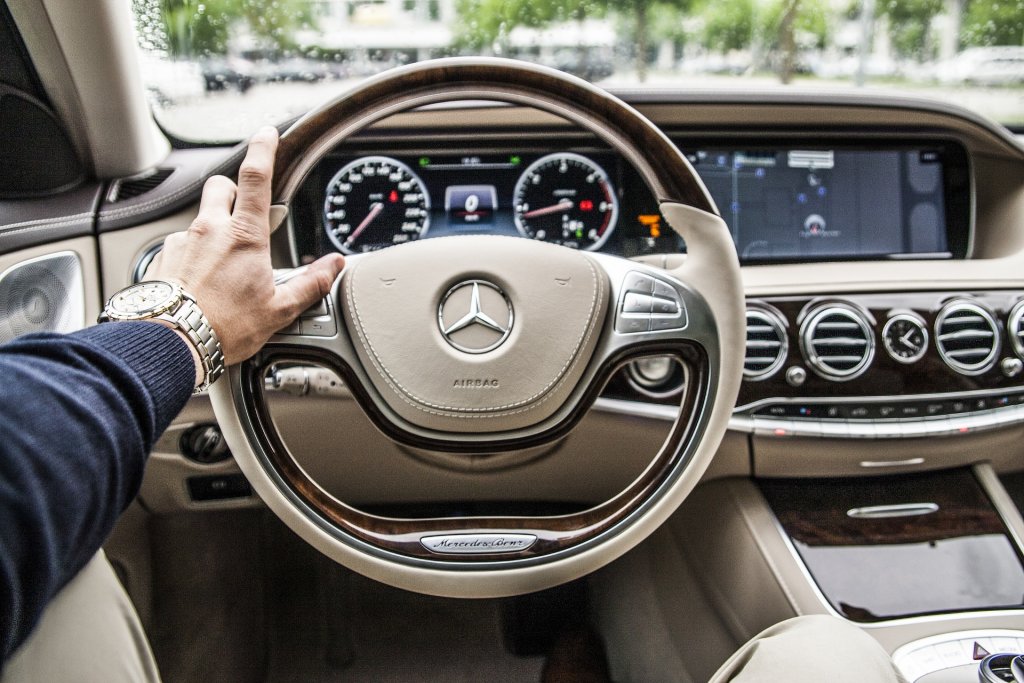How to Hear Better in the Car
Peter Stelmacovich, MCl Sc, is a hard of hearing audiologist who works for a Canadian manufacturer. In Peter’s column, The Wired Audiologist, he discusses many of the issues that affect him personally as both a hard of hearing consumer and an audiologist.

Hearing in the car is a challenging listening environment for people with hearing loss. The signal-to-noise ratios (SNRs) are less than optimal for maximum speech understanding. Moreover, conventional directional microphones are typically oriented for face to face communication which is not ideal when communicative partners are seated side by side or behind. Binaural directional microphones which can add an additional 3–4 dB of SNR improvement definitely require a face to face orientation in order to work properly. Finally, one cannot take advantage of lip-reading cues, especially if one is the driver. At night, the lack of adequate lighting negates the use of lip-reading cues for the passenger as well.
The noise levels generated inside an automobile can vary greatly by type of vehicle and the speed the vehicle is traveling. There are several websites available that list the interior noise levels of various automobiles. The data in Table 1 below, taken from http://www.auto-decibel-db.com/, is a sampling of several vehicles operating at various speeds.

As you can see the noise levels can vary as much as 12 dB. Typically, high-end gas-powered luxury sedans tend to have the lowest interior noise levels, while entry level automobiles tend to have higher noise levels. If we assume that speech is typically 65 dB in intensity, what then are the signal to noise ratios? In Table 2, I have simply subtracted the measured noise levels from the 65 dB speech levels to obtain the SNR.

The next thing we need to consider is what SNRs do people with various degrees of hearing loss need in order to communicate effectively. Figure 1 shows the classic Killion data with SNRs as a function of hearing loss. Note that this is data for a typical adult. Children need higher SNRs as do many geriatric clients. It is therefore ideal to actually assess a client’s speech in noise capabilities through a test such as the Listening in Spatial Noise Test – Sentences with the Prescribed Gain Amplifier, otherwise known as the LiSN-S PGA. I wrote about this test in a Canadian Audiologist Vol. 1, Issue 6, 2014 article entitled “The Value of Speech in Noise Assessments.”

Let’s look at a couple of examples of how to apply this information. The first example is a 40-year-old adult with a moderate sensorineural hearing loss. This gentleman owns a Honda Civic and frequently drives on highways at speeds of 100–120 KM/hr. He is usually the driver rather than passenger. Table 2 indicates that the SNR at 100 km/h would be −1.2 dB and the SNR at 120 km/h would be −3 dB. The Killion data in Figure 1 suggest that he will requires an SNR of at least 6 dB in order to understand speech. Which technology will work for him?
First, there are conventional directional microphones that can only pick up speech from in front of the listener. This will of course not work in a car since a driver must face the road, not the passenger whilst driving. Some hearing aids have the capacity to shift the directionality of the microphones to the side, and, in some cases, stream it this signal to the other side of the head that does not have an optimal microphone placement. The SNR improvement that can be obtained from this arrangement is still the same as conventional directional microphone and is about 4–5 dB. This will be satisfactory up to 80 km/h, but not higher speeds.
What about a binaural directional microphone? Hearing aids with these features combine all of the microphones on each hearing aid to achieve an SNR of 8–9 dB. While this certainly fits the SNR criteria numerically, it will not work in this case as he is frequently the driver and must keep his head facing the road.
The final options are remote microphone technologies such as Bluetooth or FM (non-adaptive) or adaptive digital remote microphone such as the Roger microphones from Phonak. Since Bluetooth remote mics provide about a 10-dB improvement this will certainly meet the criteria.
But what happens if one needs a higher SNR or there is a need to hear multiple talkers? This is certainly the case with the next example. A 38-year-old mother of 2 frequently needs to drive her children and her elderly parents to various appointments in her Ford Focus. She presents with a moderate-severe sensorineural hearing loss and the LiSN-S PGA results were in the red zone indicating that she needs SNR boosts of at least 15 dB. In this client’s case, she could use a non-adaptive remote Bluetooth remote microphone for local 50 km/h city roads as this will improve the SNR from about 7 to 17 dB. However, she will still experience difficulties hearing multiple talkers and at highway driving speeds. The only technology that can cover all of her driving listening needs would be an adaptive digital remote microphone.
Below is a picture of a set-up that I have commonly used for these situations. In it you see both communication partners using adaptive digital remote microphones that switch automatically between the talkers.

In summary, I would recommend that audiologists obtain the following critical pieces of information:
- What car does the patient drive?
- Is the patient typically the driver or the passenger?
- Does the patient frequently drive on highways?
- Does the patient need to hear multiple talkers?
- How does the patient perform on a Speech-in-Noise test?
Only when you have all the relevant information can you provide the client with an appropriate recommendation regarding technology.

